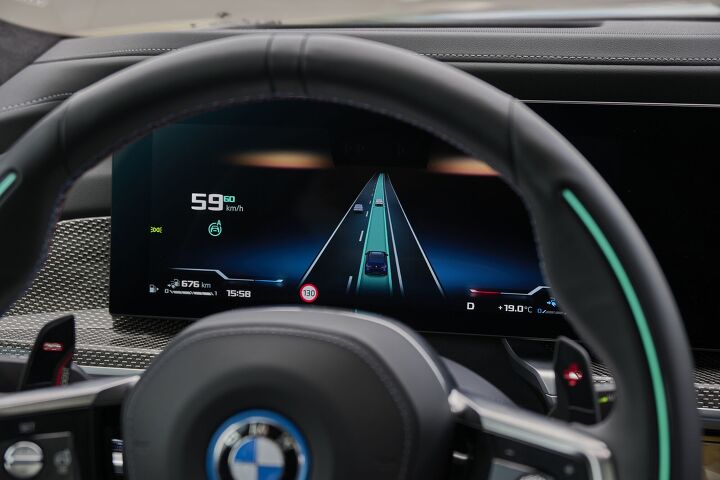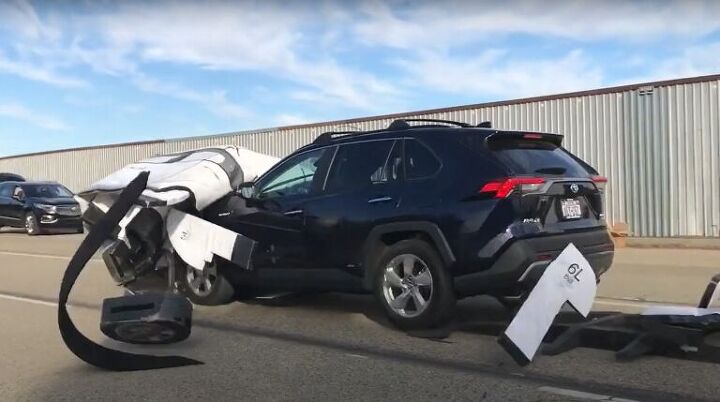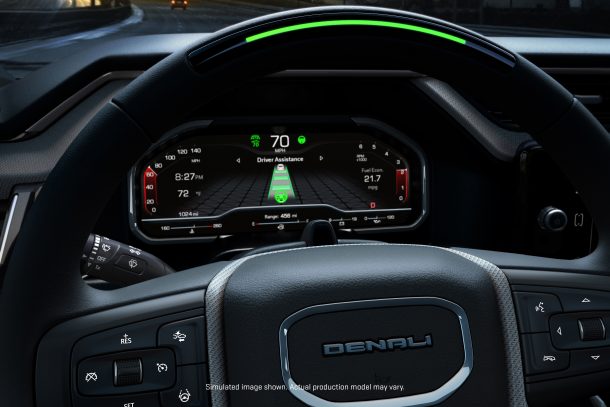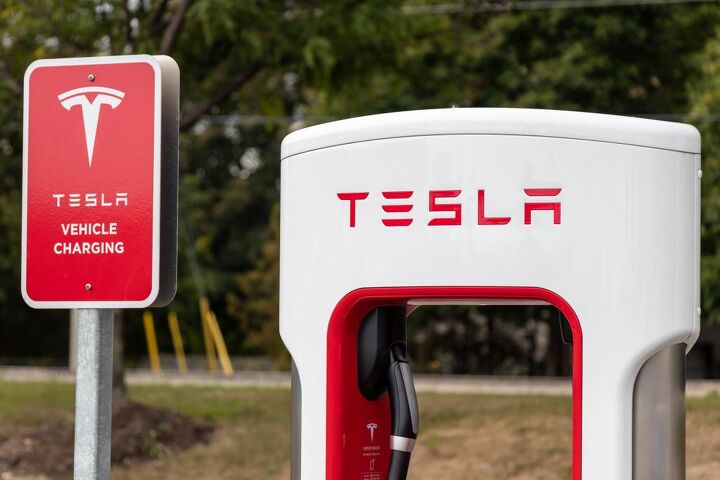#DrivingAids
Driving Dystopia: IIHS Suggests Driver Monitoring Systems Need Improvement
The Insurance Institute for Highway Safety (IIHS) has cooked up a new ratings program to encourage automakers to implement even more electronic nannies, including the kind that watch your every move behind the wheel, because the current batch have been deemed inadequate.
“We evaluated partial automation systems from BMW, Ford, General Motors, Genesis, Lexus, Mercedes-Benz, Nissan, Tesla and Volvo,” IIHS President David Harkey said. “Most of them don’t include adequate measures to prevent misuse and keep drivers from losing focus on what’s happening on the road.”
Consumer Reports Offers Ideas to Make Driving Tech Safer and More Enjoyable
Driver assistance features have started to lose their luster now that they’re starting to become mainstream. Studies have shown that they’re often less reliable than one would expect and are being implemented in a manner that may not be appealing to motorists. In an effort to tackle this problem, Consumer Reports has released detailed guidelines to car manufacturers it believes will make people more willing to engage with advanced driver assist systems (ADAS).
Rain or Shine: AAA Finds Out Advanced Driving Aids Still Suck
A new study from the American Automobile Association (AAA) has found that rain can severely impair advanced driver-assistance systems (ADAS). Similar to how highway traffic slows to a crawl when there’s a sudden deluge, modern safety equipment can have real trouble performing when a drizzle becomes a downpour.
On Thursday, the motor club organization released findings from closed-course testing that appeared to indicate some assistance suites had real trouble seeing through bad weather. AAA reported that 33 percent of test vehicles equipped with automatic emergency braking traveling collided with a stopped car when exposed to simulated rainfall at 35 mph. The numbers for automatic lane-keeping was worse, with 69 percent drifting outside the lines. Considering the number of times the people writing for this website have anecdotally criticized ADAS for misbehaving in snow, sleet, rain, fog, or just from an automobile being a little too dirty, it’s hard not to feel a little vindicated.
Twist: NHTSA Tesla Autopilot Probe Now Includes Other Automakers
The National Highway Traffic Safety Administration (NHTSA) has been doing a deep dive into Tesla’s Autopilot to determine if 765,000 vehicles from the 2014 model year onward are fit to be on the road. We’ve covered it on numerous occasions, with your author often making a plea for regulators not to harp on one company when the entire industry has been slinging advanced driving aids and distracting infotainment displays for years.
Apparently someone at the NHTSA either heard the blathering, or was at least of a similar mind, because the organization has expanded its investigation to include roughly a dozen other automakers.
NHTSA Identifies 12th Autopilot Related Crash Involving Emergency Vehicles
The U.S. National Highway Traffic Safety Administration (NHTSA) has identified another traffic incident pertaining to Tesla’s driver assistance features and emergency vehicles, making the current tally twelve. These wrecks have been a matter of focus for the agency ever since it opened a probe to determine whether or not Autopilot can handle hiccups in the road caused by scenes where flares, cones, disabled automobiles, and first responders coalesce.
Though concerns remain that Tesla is being singled out unjustly when there’s little evidence to suggest that other manufacturers are providing more capable systems. Tesla’s issues appear to be heavily influenced by irresponsible marketing that makes it seem as though its vehicles are self-driving when no manufacturer can make that claim. U.S. regulators now want to place more restrictions on vehicles boasting autonomous features and, thus far, Tesla has been behind on those trends. But it’s hard to support claims that they make vehicles safer when none seem as effective as they should be.
Ford and GM Feuding Over Names
Last month, General Motors filed a trademark infringement lawsuit against Ford’s use of the term BlueCruise for its SAE Level 2 advanced driving assistance suite. GM has argued the phrase is too close to its own SuperCruise system and wants Blue Oval to ditch the name for something else. Ford recently filed a motion asking the US District Court in San Francisco to throw out the case, as it believes the term cruise is common enough to qualify as ubiquitous.
This is the industrial equivalent of two of your friends screeching at each other because one of them wanted to name their youngest son Landon while the other already named their kid Langston. Though the manufacturer’s feud may be dumber because it’s not exactly like we’ve recently started affixing the word cruise to the systems found inside automobiles.
J.D. Power Reveals What Owners Find Annoying About Automotive Technology
Today’s automobiles are loaded with the kind of technology our grandparents could only dream about. Unfortunately, some dreams aren’t all they’re cracked up to be, and we’ve often bemoaned the many annoyances associated with modern vehicles.
J.D. Power recently shared its Tech Experience Index (TXI) Study, which has been modified to better assess specific features American drivers did and did not enjoy. The general takeaway seems to be that the average motorist feels pretty good about outward-facing cameras and anything else that improves a car’s outward visibility (handy in an era of extra chubby structural pillars).
However, the more intrusive safety inclusions that actively modify how the vehicle responds to the world around it didn’t seem to get nearly as much love, with many respondents suggesting they don’t trust the systems to behave in a predictable manner. It’s something we’re in broad agreement with and echoes many of the complaints we’ve heard from readers, friends, or rattling within our own skulls.
Tesla's 'Self-driving' Suite Grows More Expensive, Subscription Model Likely
On Monday, Tesla CEO Elon Musk announced that his company’s full self-driving (FSD) suite stands to become more expensive starting in July. Intended to serve as the prerequisite hardware for truly autonomous functionality once the software is ready, it’s proven a pricey way to get into brand’s more advance driver assistance features. Of course, the company sells it as a way to buy into complete vehicular autonomy — something that has yet to be realized anywhere in the industry — and has so far failed to deliver on that front.
Luckily for Tesla, the company remains on the bleeding edge of available automotive technologies while continuing to improve the basic fit and finish of its products. As no one else is delivering self-driving vehicles, the Californian EV manufacturer can get away with making certain claims about FSD — like how it’s inching closer to figuring out how to navigate a car through an urban environment.
Musk actually signaled that new features would be coming to the suite earlier this year, noting incoming price increases through 2020. Starting July 1st, FSD becomes an $8,000 option (tacking on a grand to the current price) and may eventually become a subscription model.
Tesla Update Adds Automatic Braking for Controlled Intersections, Results Vary
While we’ve often criticized Tesla Motors’ “Full Self Driving” (FSD) suite for being a $7,000 promise that failed to deliver, the automaker is making moves that might someday force us to eat our words.
Tesla is now releasing a new software update that includes the ability to automatically recognize and slow down for stop signs and traffic lights. CEO Elon Musk mentioned the development in Wednesday’s earnings call, referencing the system as “Traffic Light and Stop Sign Control” that builds on display options added months prior.
Annoy the Driver: IIHS Offers Its Two Cents on Improving Self-Driving Safety
The Insurance Institute for Highway Safety (IIHS) has issued a set of guidelines for advanced driving aids, suggesting that the key to automated safety is making sure drivers are perpetually engaged with the vehicle’s operations. Unfortunately, this has turned out to be a Catch-22 scenario due to the way these systems function. Semi-autonomous features are supposed to be there to help promote safety by adding an extra layer of protection; however, many encourage motorists to disengage by nature of their design.
Adaptive cruise control with lane keeping is probably the worst offender. Implemented as a way to keep cars a safe distance apart on the expressway, it offers an experience that borders on having the car chauffeur you around. The effectiveness of these systems vary widely, with none actually being capable of any legitimate self-driving functionality. You’re also not supposed to be able to tune out while they’re in use, but they all seem coyly contrived to do exactly that. The IIHS is concerned this phenomenon will only get worse as driving aids evolve and become increasingly commonplace.
“Unfortunately, the more sophisticated and reliable automation becomes, the more difficult it is for drivers to stay focused on what the vehicle is doing,” said IIHS President David Harkey. “That’s why systems should be designed to keep drivers actively engaged.”
Reportedly Terrible: AAA Tests Pedestrian Detection Systems
The paranoid luddites that write for this site have occasionally been accused of being hyper critical of modern-day driving aids. Be it a cursory mention of how a little snow totally flummoxed the systems of an otherwise agreeable review car, the direct addressing of an issue where road salt encouraged a vehicle to attempt to steer itself into a ditch, or one of this author’s many diatribes on how the bulk of this technology doesn’t seem anywhere near market ready, there’s always a couple of exceptional individuals ready to call us backward-looking morons.
While that’s often a correct assessment in other matters, it seems we’ve called this one correctly. The American Automobile Association (AAA) recently tested four sedans from competing manufacturers, running them through a handful of scenarios intended to replicate situations that place pedestrians at extreme risk. Taking into account the above smugness, you can probably imagine how poorly it went.
Land Rover Developing Remote Driving for Defender
Jaguar Land Rover is reportedly working a system for the new Defender that would allow for low-speed maneuvers with all occupants outside the car. While it sounds like a good way to guarantee the safety of friends and family when traversing a cliff face that might be a bit too narrow, recent hiccups with Tesla’s new summoning tech has proven it’s best to exercise caution.
Fortunately, Land Rover says it wants to utilize the Defender’s 3-D Scout system to map the area surrounding the vehicle and allow drivers to control the Defender remotely from the outside in off-road environments (minimizing collision risks). This will likely require the addition of some level of vehicular autonomy, as JLR stipulates drivers will be controlling the model via the automaker’s wearable “Activity Key.” Present incarnations of the device are basically proximity sensors without the necessary controls to accomplish any meaningful level of remote control.
Survey Suggests Most Motorists Dig Advanced Driving Aids
A survey released by Consumer Reports this week indicated that a majority of motorists (57 percent) believed that the advanced driving aids their vehicles had actively helped them avoid a crash. The survey, which incorporated data on roughly 72,000 vehicles from the 2015-19 model years, asked drivers to weigh in on a multitude of safety systems — including forward collision warning, automatic emergency braking, blind spot alerts, and more. While not all of these features had majority support, tabulating them as a whole showed at least half of the people using advanced driver assistance systems (ADAS) saw some value in them.
Our opinions on these systems have been thoroughly mixed. While we’ve found most advanced driving aids to be inconsistent in their operation, sometimes befuddled by fog or a vehicle encrusted with roadway grime, we’ll happily admit that adaptive cruise control offers more utility than the standard on/off inclusions of yesteryear. But we’ve also seen disheartening reports that semi-autonomous features dull a good driver’s senses to a point that effectively makes them a worse motorist and would be lying if we said we trusted any of these systems implicitly.
Some Drivers Still Oblivious About Automated Systems, IIHS Faults the Name Game
Many consumers continue to misunderstand the driver-assistance technologies being placed in modern vehicles, according to the latest survey released by the Insurance Institute for Highway Safety. But we don’t need the IIHS to tell us that. We’ve been documenting the avoidable accidents created whenever motorists overestimate what their high-tech cars are capable of for years now.
However, the insurance institute and numerous consumer advocacy groups have suggested that big part of the problem stems from the names manufacturers are using to describe their semi-autonomous hardware. Titles like “Autopilot” or “Driving Assistant Plus” can be confusing to somebody who didn’t bother to read the manual, especially when the associated marketing materials are often helping to steer them further in the wrong direction.
Here's Looking at You, Kid: Volvo to Deploy In-car Cameras to Monitor Your Behavior
Volvo has burdened itself with the unrealistic duty of ending fatalities in its cars. While an admirable goal, eliminating roadway mishaps in their entirety is an exceptionally tall order. We’ve often wondered how the company intends to progress toward its zero-death target. The automaker has already said it intends to reduce speeding by limiting the top speed of all models to 112 mph.
On Wednesday, the company said it will introduce an orange “Care Key” that allows owners to apply whatever maximum velocity they desire (below 112 mph) and an in-car camera system designed to keep you from misbehaving behind the wheel. Volvo’s commitment to safety seems to exist without boundaries, but it leaves us wondering how far is too far.





























Recent Comments